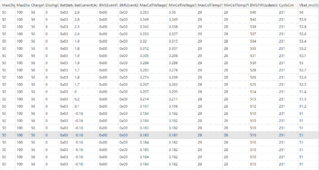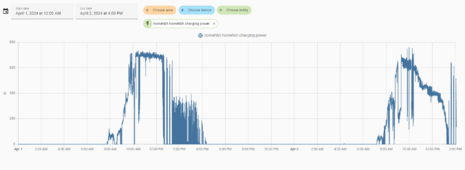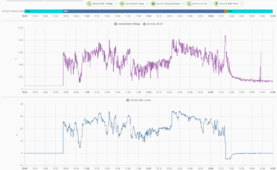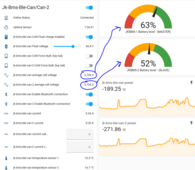Today, I did a final check with inverter dealer (technical guy) and discovered that the voltage sensor (type of voltage divider resistor) on the inverter was not in good condition and cause the reading voltage from battery wrong (Vbat_inv) and often high when charging. as the result the High voltage alarm trigger by the inverter and stop charging.
The charging with revised config worked out well on 104Ah battery and 280ah battery and also 50Ah.
104Ah battery with auto charge current using map(): 4.4kWh was charged
View attachment 206437
And here is the one with 280Ah battery, 13.3kWh charged (using manual charging current control) - the guy does not want to control automatically. He wants to rip the more solar the better. haiza
View attachment 206438
And this is for my case auto charging with 50Ah battery. 2.7 kWh was charged.
View attachment 206439
Please be sorry Mr. Pablo for revising the code too much (I based on the 2 months ago code provided by Sleeper85)
Here is the link for the revised one / messy but sound fun.
Esphome Example. Contribute to paulsteigel/esphome_example development by creating an account on GitHub.

github.com
With this cutting on code, the bms battery can work almost the same as a lead acid battery but Inverter can check view stuff on battery
I am planning to do more with
+ Control charging current by time: still wonder how to have time entity in home assistant be used in esphome code.
+ Find a way to deal with charge voltage limit control (still not possible to do in Luxpower inverters)
+ There is also problem on calculating charging cycle that Lux does not accept. So I will try finding a way to work this out!
+ Also a bit more revision on current limit recovery should be applied to make the charging curve be smooth (should not back to high current again to avoid some power rush in);
+ Fixing end of charge stage: currently my revision make the charge prolonged, and can only be stoped when charging voltage is high (57.4 for 16S battery on Luxpower inverter).
Many thanks yo Slepper85 for your starting code and Mr.Pablo for your wonderful code on platform: copy (that save me tons of time). And please be sorry for removing a lot of your code in 0x355 and 0x351 section.
Best!
For your information: this is the charging curve for SVE5000 battery (premium) - 4.4Kw charged to day
View attachment 206441
Yesterday charge using
@MrPablo pow() function and today using map(): for my 50Ah battery
View attachment 206442













